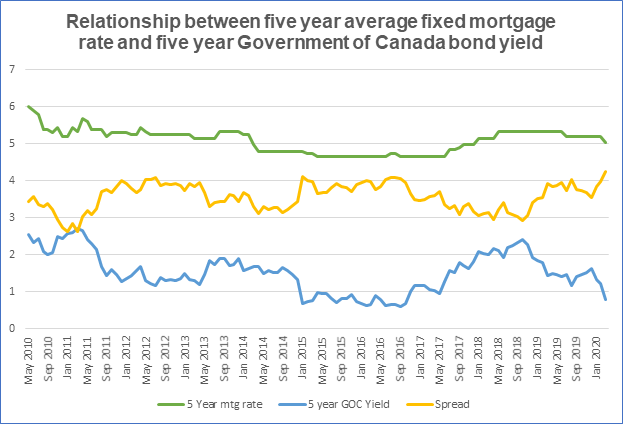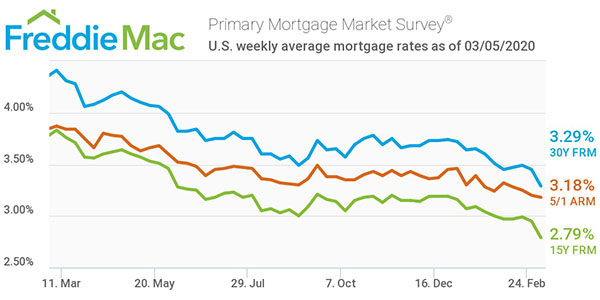They need to pick a settlement bundle with each lending institution they deal with beforehand so all debtors are charged the same flat percentage rate. Naturally, they can still partner with three different wholesale banks and select differing compensation packages, then attempt to send out customers to the one that pays the many.
Sure, you may not pay any mortgage points out-of-pocket, but you may pay the price by agreeing to a greater mortgage rate than essential, which equates to a lot more interest paid throughout the life of the loan assuming you keep it for a while. Some lending institutions may provide so-called unfavorable points Which is another way of saying a lending institution credit These points raise your rate rather of lowering it However lead to a credit that can cover closing expenses If points are involved and you are offered a higher rate, the home loan points act as a loan provider credit towards your closing expenses - buy to let mortgages how do they work.
Now you might be wondering why in the world you would accept a higher rate than what you certify for? Well, the trade-off is that you do not have to spend for your closing expenses out-of-pocket. The money created from the greater rates of interest will cover those charges. Obviously, your month-to-month home loan payment will be greater as a result.
This operates in the exact opposite method as conventional home mortgage points because you get a greater rate, but instead of spending for it, the lending institution offers you money to spend for your charges. Both techniques can work for a debtor in a given situation. The positive points are good for those looking to reduce their home loan rate a lot more, whereas the negative points are great for a house owner brief on money who does not want to spend everything at closing.
6 Easy Facts About How Do Reverse Mortgages Work Example Described
If the broker is being paid 2 mortgage points from the lender at par to the borrower, it will appear as a $2,000 origination charge (line 801) and a $2,000 credit (line 802) on the HUD-1 settlement declaration. It is awash due to the fact that you do not pay the points, the loan provider does.
Now let's assume you're just paying 2 points out of your own pocket to compensate the broker. It would merely show up as a $2,000 origination charge, without any credit or charge for points, given that the rate itself doesn't include any points. You may also see absolutely nothing in the method of points and instead an administration cost or comparable vaguely named charge.
It might represent a specific portion of the loan amount, however have absolutely nothing to do with raising or decreasing your rate. Regardless of the variety of home loan points you're ultimately charged, you'll be able to see all the figures by evaluating the HUD-1 (lines 801-803), which information both loan origination costs and discount rate points and the total cost combined.
Above is a handy little chart I made that displays the cost of home mortgage points for various loans amounts, ranging from $100,000 to $1 million. As you can see, a home mortgage point is only equal to $1,000 at the $100,000 loan amount level. So you may be charged a number of points if you have actually got a smaller sized loan amount (they require to generate income in some way).
The 3-Minute Rule for How Do Second Mortgages Work
And you question why loan officers desire to come from the biggest loans possible Usually, it's the very same amount of work for a much bigger payday if they can get their hands on the extremely jumbo loans out there. Make sure to compare the expense of the loan with and without mortgage points included, across various loan programs such as standard offerings and FHA loans.
Likewise note that not every bank and broker charges mortgage points, so if you put in the time to search, you might have the ability to avoid points completely while securing the most affordable mortgage rate possible. Learn more: Are mortgage points worth paying! (how do reverse mortgages work after death).

?.!?. Editorial IndependenceWe desire to help you make more educated decisions. Some links on this page plainly marked might take you to a partner website and might result in us earning a recommendation commission. For additional information, seeOne of the many economic effects of COVID-19 is that interest rates on home mortgages have dropped to record low levelsproviding a money-saving opportunity for those fortunate enough to be in a position to buy or refinance a home.
But there's another way to get a lower interest ratefor a price. Buying home loan points, also called "buying down the rate," is a strategy that includes paying additional money upfront at closing in order to shave down the rates of interest of your loan. Typically, purchasing home mortgage points is just worth your while if you prepare to remain in your home for a number of years, normally at least 6.
Fascination About How Arm Mortgages Work
Would you rather invest that cash upfront to purchase down your rate, or does it make more sense to put down a bigger down paymentor even sock that cash away into your 401( k) account? Here are the things to consider when evaluating home mortgage points. Lenders deal mortgage points, likewise referred to as discount rate points, when you apply for a home loan.
Lenders also refer to home mortgage points as "buying down the rate." Selecting to take points on a mortgage is completely optional, however it is one way to decrease your overall rates of interest and your month-to-month payment. A lot of lenders let you purchase between one and three points (in some cases less, in some cases more) which you pay upfront as part of your closing costs.
The monthly savings that result will depend upon the rate of interest, just how much you borrow, and the term of the loan. The length of time you prepare to be in the home is important to your computations. It generally takes a borrower in between 4-6 years to recover the cost from paying discount https://stephenkqiv669.wordpress.com/2020/12/25/5-simple-techniques-for-how-do-banks-make-money-on-reverse-mortgages/ points at closing, states David Reischer, a property lawyer at LegalAdvice.
Bear in mind home mortgage points are generally just utilized for fixed-rate loans. They are readily available for adjustable-rate home mortgages (ARMs), but they just reduce your rate for your initial duration till the rate adjusts, which does not make the financial investment worth it. The table below will reveal you just just how much points cost, just how much you can conserve, the discount rate you could see on your rate, and for how long it requires to break even utilizing the example of a 30-year, 3 - how do house mortgages work.
The Only Guide to How Do Construction Mortgages Work
PointsAPR (Prior to discount) APR (with 0. 25% discount rate per point) Points Expense (1 point= 1% of loan) Monthly Payment (principal plus interest) Savings Per MonthBreak Even Number of Months0 points3. 53%$ 0$ 1,126$ 01 Point3. 53% 3. 28%$ 2,500$ 1,092$ 34 73. 5 2 Points3. 53% 3. 03%$ 5,000$ 1,058$ 6873. 5 3 points3. 53% 2. 78%$ 7,500$ 1,024$ 10273. 5 * Rates above based on June 2020 rates As you can see, investing $5,000 upfront to purchase down 2 points will lower your rate from 3.

03%, conserving you $68 on monthly home loan payments. When your $5,000 is paid back after about six years, you will start to see savings. In this example, a savings of $68 per month can develop into $816 conserved per year, and $8,160 saved money on your loan over the following 10 years.